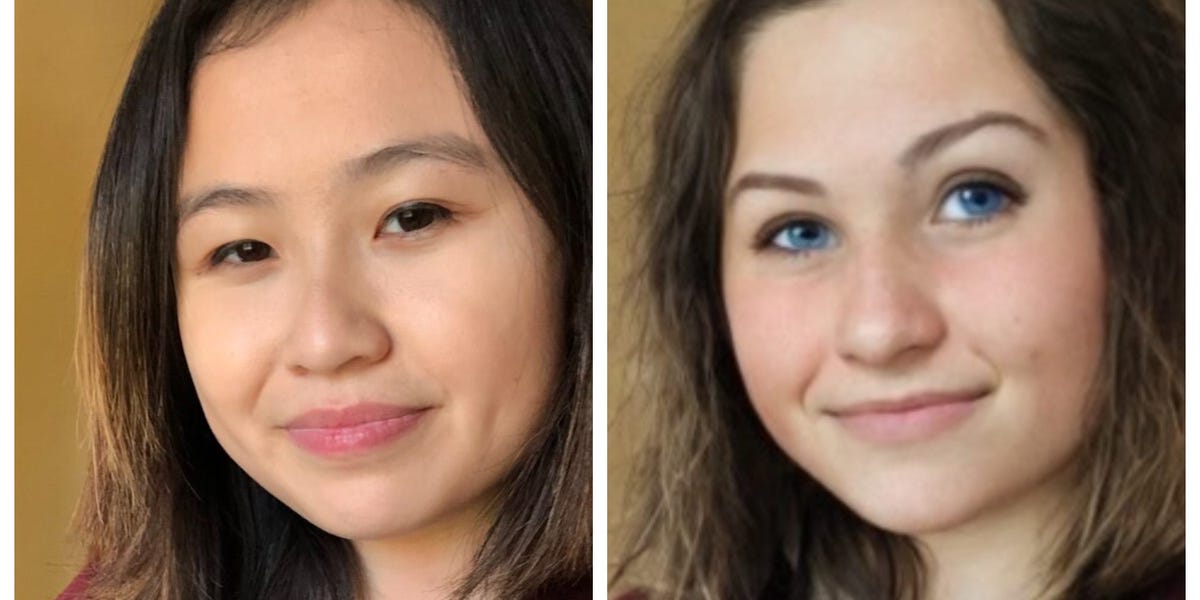An Asian MIT student asked AI to turn an image of her into a professional headshot. It made her white with lighter skin and blue eyes.::Rona Wang, a 24-year-old MIT student, was experimenting with the AI image creator Playground AI to create a professional LinkedIn photo.



With a much lower denoising value I was able to get basically her but airbrushed. It does need a higher denoising value in order to achieve any sort of “creativity” with the image though, so at least with the tools and “skill” I have with said tools, there’s a fair bit of manual editing needed in order to get a “professional linkedin” photo.
Yeah if she wants the image to be transformed lower denoising won’t really do it.
Honestly, I know what she did, because I had the same expectation out of the system. She threw in an image and was expecting to receive an infinite number of variations of specifically her but in the style of a “LinkedIn profile photo”, as though by providing the single image, it would map her face to a generic 3d face and then apply that in a variety of different poses, lighting situations and clothing. Rather, what it does is learn the relations between elements in the photo combined with a healthy amount of static noise and then work its way toward something described in the prompt. With enough static noise and enough bias in the model, it might interpret lots of fuzzy stuff around her eyes as “eyes”, but specifically Caucasian eyes since it wasn’t specified in the prompt and it just sees noise around eyes. It’s similarly easy to get a model like Chillout (as someone mentioned in another thread) to bias toward Asian women.
(This is the same picture, just a model change, same parameters. Prompt is: “professional quality linkedin profile photo of a young professional”)
After looking at a number of different photos it’s also easy to start to see where the model is overfit toward a specific look, which is a problem in a technical sense (in that it’s just bad at generating a variety of people, which is probably the intention of the model) and in an ethical sense (in that it’s also subjectively biased).
You could get a more controlled result if you use inpainting. I resized the image in an image editor first, because it gave me really strange results when I gave it the strange resolution of the image from the article. I masked out her face and had the model go ham on the rest of the image, while leaving the face and the hairline untouched.
After that I removed the mask, changed the denoising strength to 0.2, applied the “face fix”, and this is the end result.
It’s usable, but I think it’s a weird use-case for these kinds of tools. Like yeah you can retouch photos if you’re careful enough, but at the same time, wouldn’t it be easier to just dress up and take some new photos? I dunno, the idea of using an AI generated profile image feels kind of sketchy to me, but then again we have had beautification filters available for ages - my work phone, a Google Pixel 6, comes with it built into the camera application. Every time the camera opens on my face I get this weird uncanny feeling.
Anyway. The article does touch upon a problem that definitely worries me too
I really hope no company would use an image model to analyse candidates profile photos, because as an ugly person that makes me want to scream. However, this has been a problem in the past, Amazon developed a tool for use by recruiters, which turned out to have a bias against women. I can easily see a “CV analysis tool” having a bias against people with names of non-European origin for example.
At this point I think it’s impossible to put the genie back into the bottle, given the chance I definitely would, but I think all we can do now is ensure that we try and mitigate potential harm caused by these tools as much as possible.